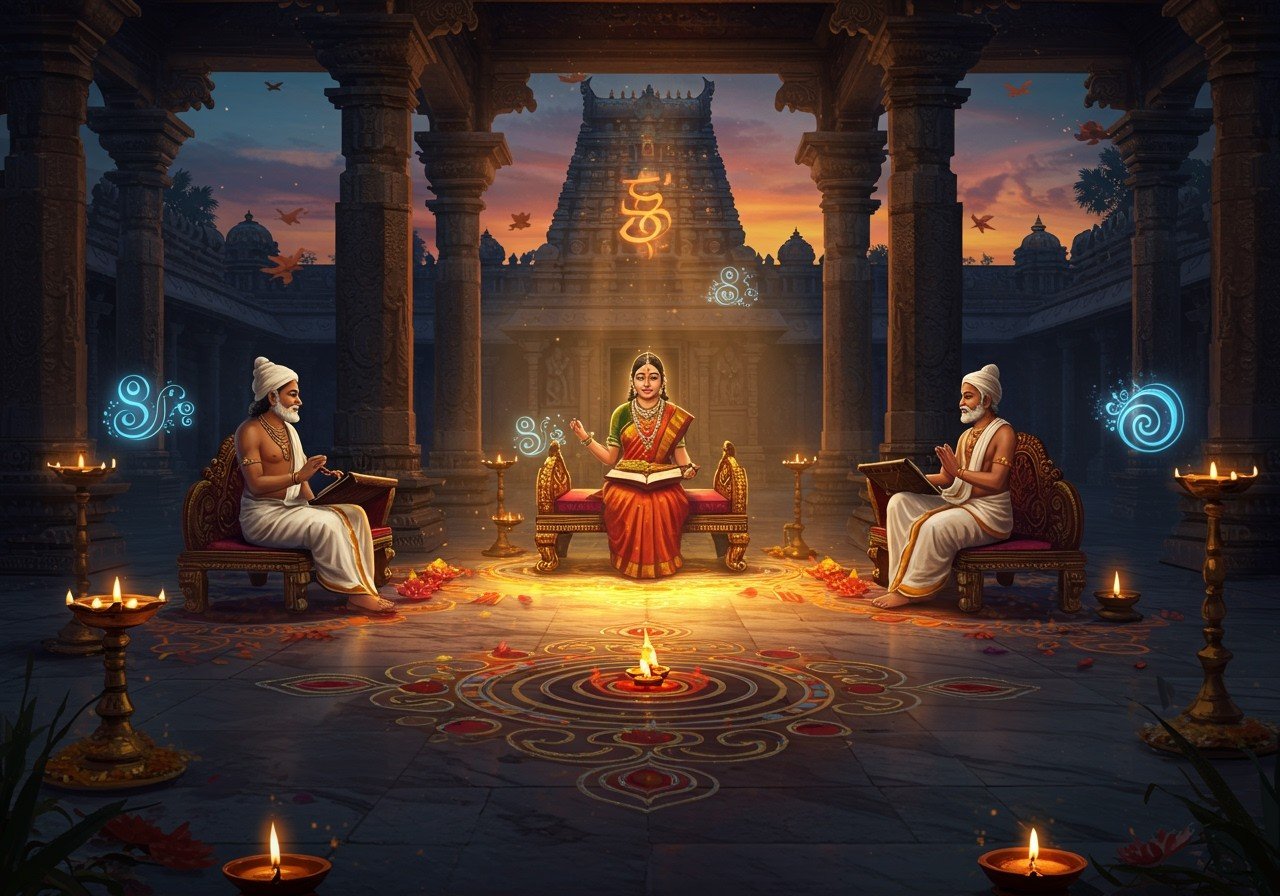
Sangam Literature, the earliest known literature in Tamil, holds a significant place in India’s cultural heritage. This period, marked by gatherings of poets at academies (Sangams), is believed to have spanned from the 3rd century BCE to the 3rd century CE. This article delves into the Sangam Literature era, exploring its historical context, the nature of its compositions, and the enduring significance of this golden age in Tamil literature.
Historical Context of the Sangam Period
Understanding the Sangam Period
The Sangam period signifies a time in ancient South India when Tamil literature flourished. During this era, the Cheras, Cholas, and Pandyas reigned as the three major Tamil dynasties, demonstrating considerable support for literature and the arts.
Role of Dynasties
- Cheras: Known for their maritime trade and connections with Rome and China. Their rule contributed significantly to the cultural exchange and economic prosperity of the region, influencing the themes and perspectives found in Sangam literature.
- Cholas: Renowned for their powerful navy and vast empire. Their influence extended across the seas, facilitating trade and cultural interactions that enriched the literary landscape of the time.
- Pandyas: Famous for their capital, Madurai, a vibrant cultural hub. Madurai served as a meeting place for scholars and poets, fostering the growth and development of Sangam literature.
Archaeological Evidence and Sangam Assemblies
Inscriptions and artifacts unearthed through archaeological excavations provide crucial evidence for dating the Sangam period and understanding its cultural richness. These findings showcase the significant influence of trade on the development of culture and literature. Sangam assemblies, held in cities like Madurai and Kanchipuram, were vital platforms where poets shared their work and nurtured literary talent.
Influence of Trade
Trade, both inland and overseas, brought wealth and new ideas to the region. This exchange enriched the cultural and literary scene, leading to the diverse themes and perspectives found in Sangam literature.
Composition and Structure of Sangam Literature
Defining Sangam Literature
Sangam literature is categorized into two main collections:
- Ettuthokai (Eight Anthologies): This collection comprises eight anthologies of poems, showcasing a wide range of themes and poetic styles.
- Pathuppattu (Ten Idylls): This collection features ten long poems, often narrating stories of love, heroism, and nature.
Themes, Notable Works, and Oral Tradition
Common themes in Sangam literature include Akam (Love) and Puram (War), reflecting the complexities of human emotions and experiences. Prominent figures include Thiruvalluvar, author of Thirukkural, Kapilar, and Avvaiyar. The oral tradition played a crucial role in preserving these works for generations, with specific meters and concepts like thinai (landscape) adding to their unique character.
Cultural and Social Insights from Sangam Literature
Sangam literature offers valuable insights into the social structure, portrayal of women, depictions of warfare and heroism, religious and spiritual beliefs, the role of nature, hospitality, patronage, poetic excellence, and its influence on later Tamil literature.
Social Structure and Portrayal of Women
Sangam literature vividly depicts daily life and social structures, showcasing diverse professions like farmers, traders, warriors, and artisans. Women are portrayed with respect, often as strong and wise figures central to the narratives, exemplified by Kannagi from Silappatikaram.
Warfare, Heroism, Religion, and Nature
Warfare and heroism are recurring themes, celebrating valor and honor. References to Hindu deities and practices, like invoking Murugan and Vishnu, reveal the spiritual beliefs of the era. Nature plays a significant role, with landscapes used to express emotions, adding depth to the poetry.
Hospitality, Patronage, Poetic Excellence, and Enduring Legacy
Hospitality and patronage of poets are highlighted, showcasing the cultural values of the time. Poets employed literary devices like alliteration and hyperbole, demonstrating their skill. Sangam literature’s legacy is profound, influencing later Tamil literary traditions and continuing to inspire scholars and artists globally.
How Poojn.in Connects You with Sangam Literature’s Heritage
Poojn.in, India’s leading cultural goods and services store, offers authentic ritual items that connect you with the rich heritage of Sangam Literature. Our collection includes:
- Traditional brass and copper lamps (Vilakku): Similar to those used for worship during the Sangam period, these lamps illuminate your space with tradition.
- Pure copper and bronze vessels: Reflecting ancient Tamil prayer traditions, these vessels add authenticity to your rituals.
- Handcrafted items: Made by skilled artisans using age-old techniques, these items embody the spirit of Sangam craftsmanship.
Poojn.in bridges the gap between tradition and modernity, offering carefully curated products that enable you to:
- Perform rituals with authentic items mentioned in Sangam texts, experiencing a deeper connection to the era.
- Create a sacred space at home that honors ancient Tamil traditions, bringing the spirit of Sangam culture into your life.
- Access quality puja items that reflect the cultural richness of the Sangam era, enriching your spiritual practice.
Visit Poojn.in today to explore our collection and embrace the timeless traditions of the Sangam period.
Explore related articles on our blog:
- Hindu Temple Architecture: Significance and Symbolism
- Varanasi’s Sacred Sites: A Spiritual Journey Exploring Ancient Temples and Ghats


